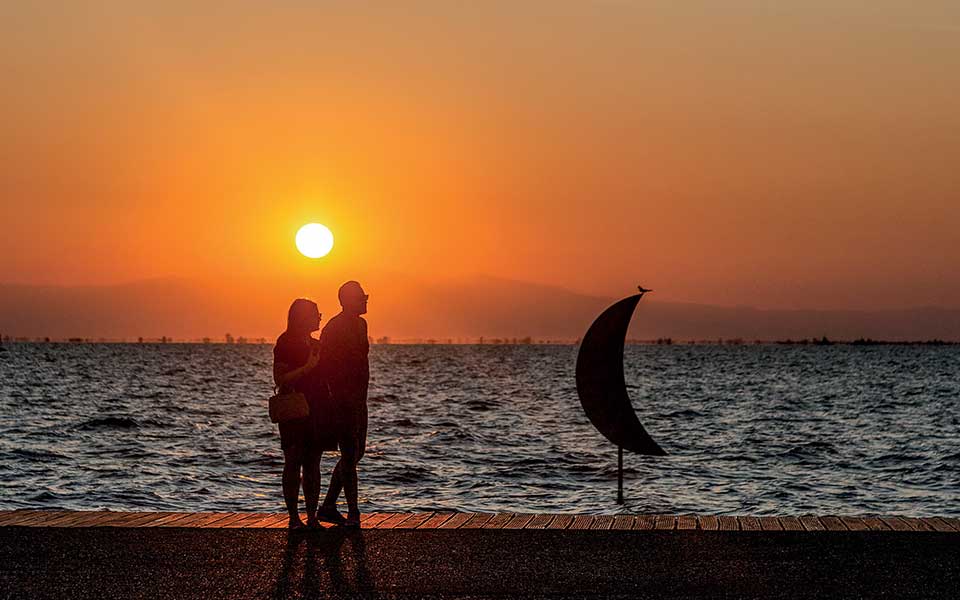Official check-in @ Aristotelous Square
You can’t visit Thessaloniki and not stop by its central plaza. Aristotelous Square, a jewel that fuses Byzantine style with Western architecture, should be the start of your journey into the heart of the city.
Facing southwest, you can see the waterfront and the Thermaic Gulf. If you turn your back on the sea, however, you’ll realize the square isn’t, in fact, a classic rectangle: you’re in a bottle-shaped open area that stretches all the way inland to the Roman Agora. To the left and right of you at the point where the square opens out are its two architectural landmarks: the Electra Palace Hotel and the Olympion, the cinema-lovers’ haven.
The alleyways around it are full of secret gems. Heading away from the sea, just before you reach Egnatia Street, you’ll find Kapani Market, a large open-air affair, off to the left; to the right is Athonos Square, with stores selling organic products and vegetables.
Stop at 24 Vatikiotou for quality, freshly roasted nuts at Charilaos. Visit Ragian (12 Balanou), a small delicatessen, to try local delicacies. Music workshops, artisans still practicing traditional trades and small tavernas frequented by students keep the square alive almost 24/7.
On the corner of Aristotelous and Tsimiski streets, do as the locals do and enjoy a delicious bougatsa (cream pie) at Paradosiako (3 Aristotelous), established in 1957 and open 24 hours a day. The locals, on their way to do their errands, grab a sesame-sprinkled koulouri (a bread ring), the street food of Thessaloniki, from the vendors scattered around Tsimiski and Mitropoleos; they are served warm early in the morning, and around 18:00.
Treat the pigeons, the square’s first and oldest residents, to the sesame seeds left at the bottom of your koulouri’s paper bag. As the evening closes in, the best remedy against the chill of the northwestern wind, known locally as the Vardaris, is a hot salepi drink, purchased from one of the street sellers, to warm your throat and hands as you stroll along the brightly lit square.
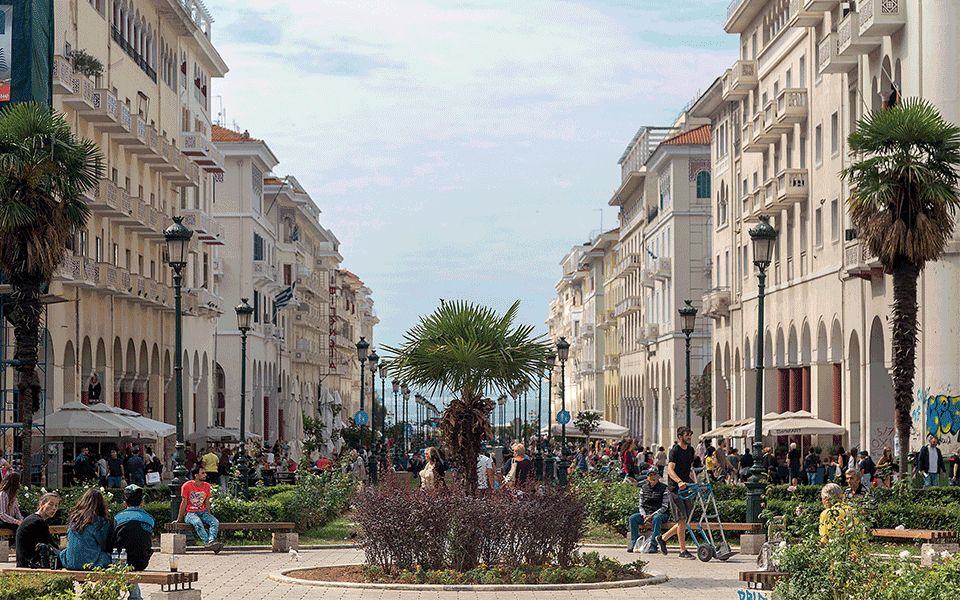
© Perikles Merakos
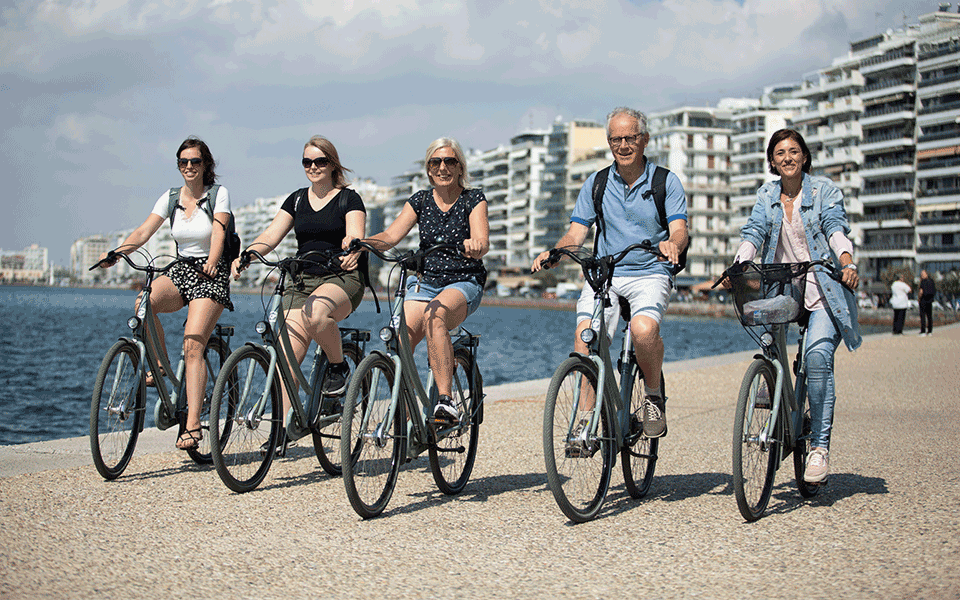
© Nicolas Economou
Thessaloniki on (eco-friendly) wheels
Thessaloniki may not be one of the quintessential cycling cities of Greece, like Trikala, Karditsa or Kalamata, but it’s certainly bike-friendly.
The promenade (a car-free 5-km stretch from the port to the Concert Hall) the broad sidewalks, the squares and the city’s street planning all allow you to enjoy it on wheels. You will find electric scooters (scattered, unfortunately, along the cycle paths), for which you’ll need to download the relevant app onto your mobile phone.
The city has eight ThessBike (thessbike.gr) stations in central spots for picking up and dropping off rental bikes in the special parking slots.
Bike it (bikeitrentals.com), a few meters from Makedonia Palace, offers a wide variety of bicycles, so you can choose the one that suits you: mountain bikes, electric bikes, tandems, cycle rickshaws and covered two-seater and four-seater quadricycles to enjoy with friends or family.
If you don’t feel like pedaling around on your own, Let’s Meet in Thessaloniki (meetinthessaloniki.eu) organizes guided and themed bicycle rides to show you the city’s highlights, explore its neighborhoods, or take you on a gastronomical tour of the best eateries.
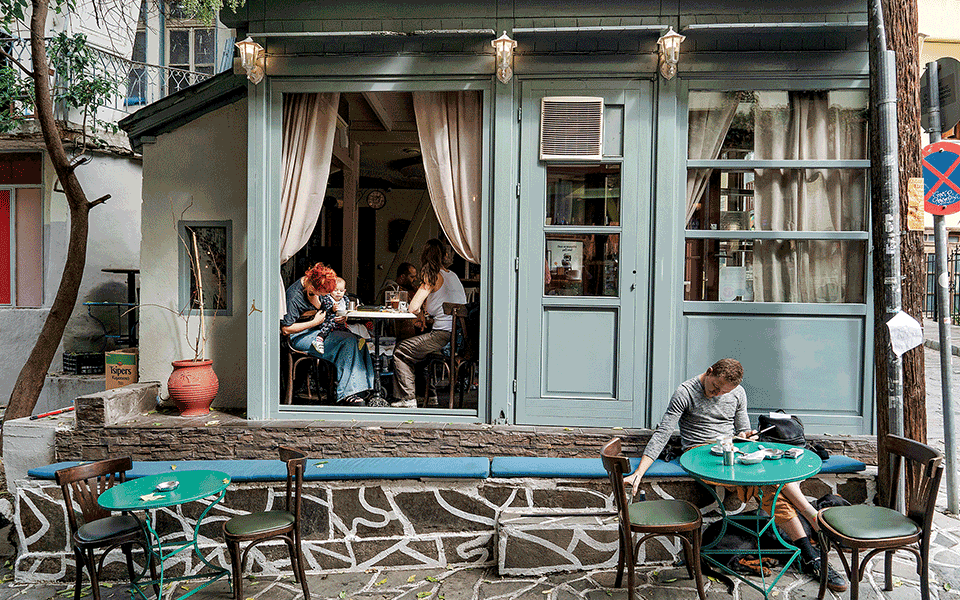
© Perikles Merakos
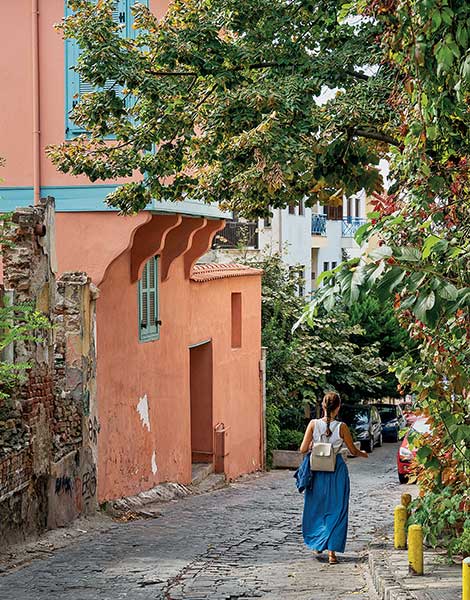
© Perikles Merakos
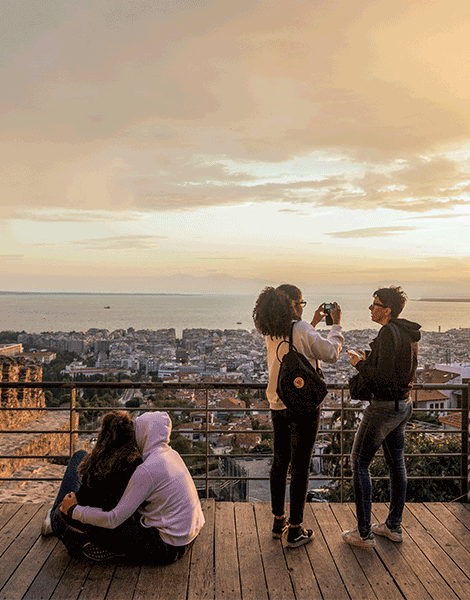
© Perikles Merakos
Ano Poli: The city above the city
For some great urban hiking, explore Ano Poli – right by the Byzantine walls. Besides the dreamy vistas it affords of the rest of Thessaloniki, the bay and majestic Mt Olympus, the “upper city” of Thessaloniki is packed with impressive monuments.
Let yourself get lost in the maze of enchanting cobblestone alleys, lined with charming examples of traditional Ottoman architecture as well as some truly impressive street art.
Hidden among the byways up here are several UNESCO World Heritage sites: the Church of Aghios Nikolaos Orfanos, the Church of Osios David and the Byzantine Baths.
Keep climbing and you’ll come to Vlatadon Monastery, with its stellar views and beautiful church. Just west is the enchanting alley called Sthenonos; it edges Tsitsanis Square, a space dedicated to Vassilis Tsitsanis, the legendary composer of rebetika music, a kind of Greek blues.
Follow the walls – themselves a UNESCO World Heritage monument as well – eastward, and you’ll come to Thessaloniki’s premier viewpoint, the Tower of Trigonio, as popular with locals as with visitors, especially at sunset.
By now, you’ll have worked up an appetite, so for classic meze dishes, duck through the old city gate at the Tower of Trigonio and head west. You’ll find the eatery Ticho Ticho (1 St. Polidorou), on an enchanting corner tucked right behind the city walls.
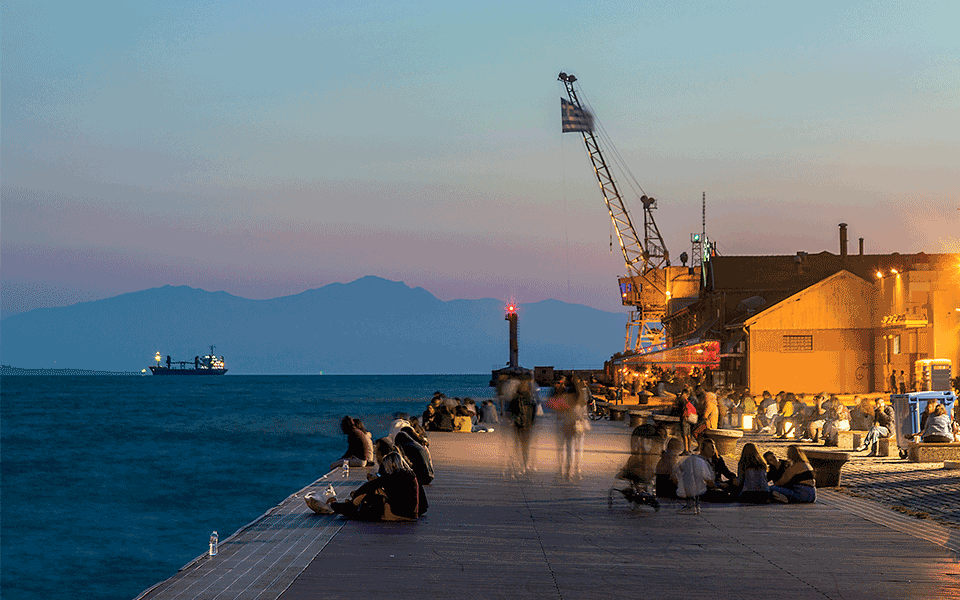
© Perikles Merakos
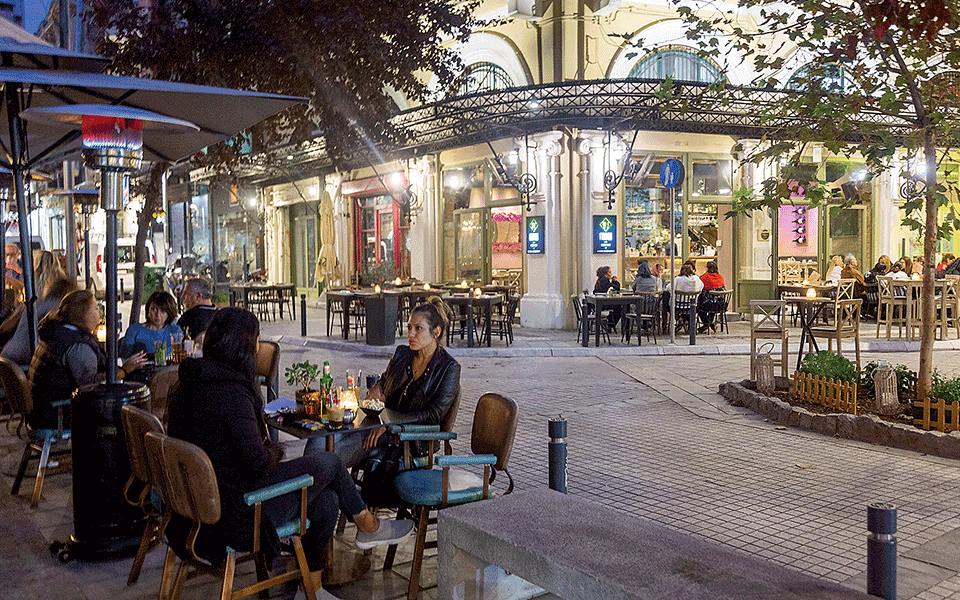
© Perikles Merakos
a stroll around the port
Anchoring one end of Thessaloniki’s gorgeous seafront promenade is the port, now a destination for arts and leisure. The original elegant brick warehouses now house cultural spaces, including three dynamic contemporary museums: the MOMus Photography Museum, the MOMus Experimental Center for the Arts, and the Thessaloniki Cinema Museum.
Besides being a key venue for Thessaloniki’s film and documentary festivals, the Cinema Museum’s excellent screening rooms show art-house classics and quality new releases from autumn through spring.
Despite its many cultural options, the port is also a prime destination for doing absolutely nothing. Wooden loungers built for two are perfect spots for daydreaming and gazing across the water.
Just up from the port, you’ll find the “Ladadika” – former warehouses that have been charmingly converted into tavernas, cafés, and bars. The area is particularly festive by night, and especially on holidays – everything from Halloween to St. Patrick’s Day.
By day, visit Ta Bakaliarakia tou Aristou (3 Katouni) to lunch like a local on salted cod in extra crispy batter served on greaseproof paper. A side smattering of “skordalia,” the zesty garlic sauce, and a fried hot pepper are essential accompaniments.
Above Tsimiski Street is Ano Ladadika – around Emporiou Square, spice merchants share the streets with restaurants, bars and cultural venues.
To experience Thessaloniki’s famously fun nightlife, try some bar hopping around Valaoritou Street, then stop at the Stoa Malakopi for a tasty slice at Poselli Pizza (2 Vilara), named for the architect who designed this Belle Epoque arcade, a landmark once home to the Banque de Salonique.
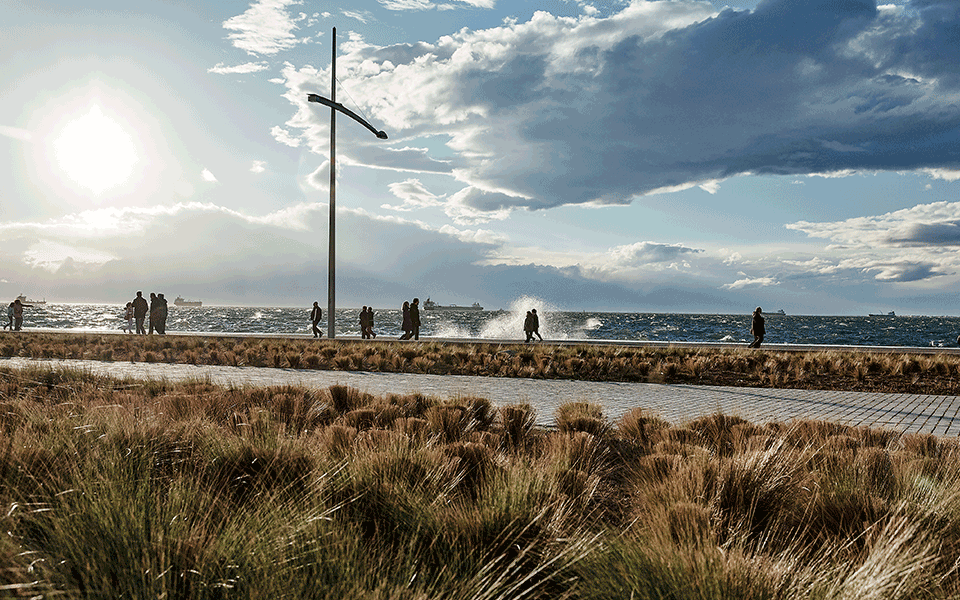
© Heinz Troll
Nea Paralia: FUN at the water’s edge
After its regeneration, the locals say that the new waterfront, Nea Paralia, is the most “European” part of the city: a 3.5-km promenade along the sea, stretching unobstructed from the Makedonia Palace to the Concert Hall.
It’s a route for walking, exercise, people watching and bicycle rides. With a stick of colorful cotton candy in your hand, bought from one of the street sellers, pose for a photograph in front of the mesmerizing Zongopoulos sculpture “Umbrellas,” which soars to a height of 13 meters. And just before sunset, take a photo of Pavlos Vasiliadis’ “Moon” sculpture, which was installed in the sea with the help of divers and looks like an optical illusion.
For a view of the city from the water, climb aboard one of the kitschy themed boats of the Thermaic Gulf, such as the Arabella or the Cleo, which offer sightseeing, drinks and music on their short cruises.
For more views of both the sea and the city, head to Allegro, the Concert Hall’s café. Near the waterfront is also one of the city’s best restaurants, Opsopoion Maganeiai (5 Emiliou Riadi), which serves a very limited number of diners, so you must book at least a few days in advance.
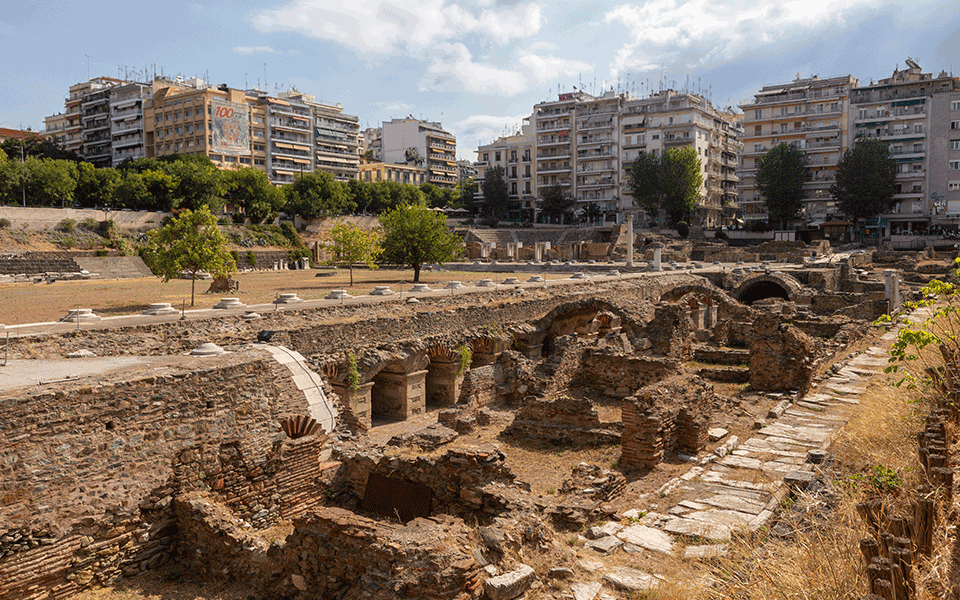
© Perikles Merakos
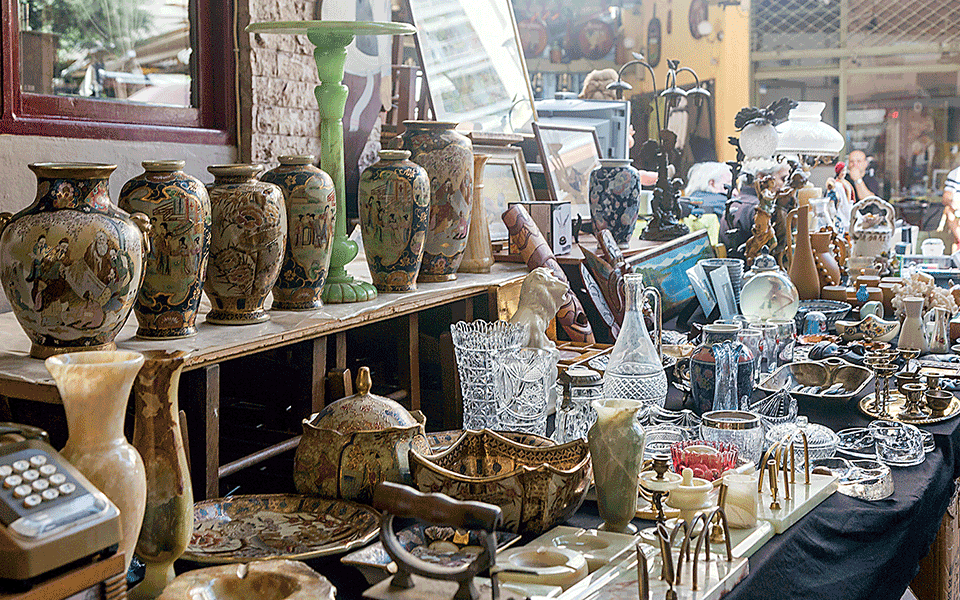
© Perikles Merakos
A lively neighborhood
Thessaloniki’s Roman Agora is, ironically, a relatively recent addition to the city – its ruins were only discovered in the 1960s. It’s now the heart of one of the city’s most dynamic neighborhoods, where contemporary culture converges with history, faith and nostalgia.
The Agora itself is a great place to start your visit, strolling around the Odeon and the Cryptoporticus, then visiting the half-hidden underground museum.
Just up from the Agora is the Church of Aghios Dimitrios, Thessaloniki’s patron saint. On Friday evenings, a uniquely moving Holy Liturgy is celebrated in the crypt, once a Roman bath where, according to tradition, the saint was martyred.
To experience the neighborhood’s contemporary energy, visit the art gallery Nitra (51 Filippou), then treat yourself to a coffee in the black and white elegance of Loux ( 83 Olympou).
Traces of the Thessaloniki of old survive in the “Bit Bazaar,” a flea market started in the 1920s by Greek refugees from Asia Minor, selling what they could to get by. Nowadays, the antique stores in the courtyard of the market are interspersed with charming places for meze.
For a more daring local specialty, stop off at Tsarouchas (78 Olympou) for patsas – a bowl of this tripe-and-trotter soup is a traditional way to end a late night out.
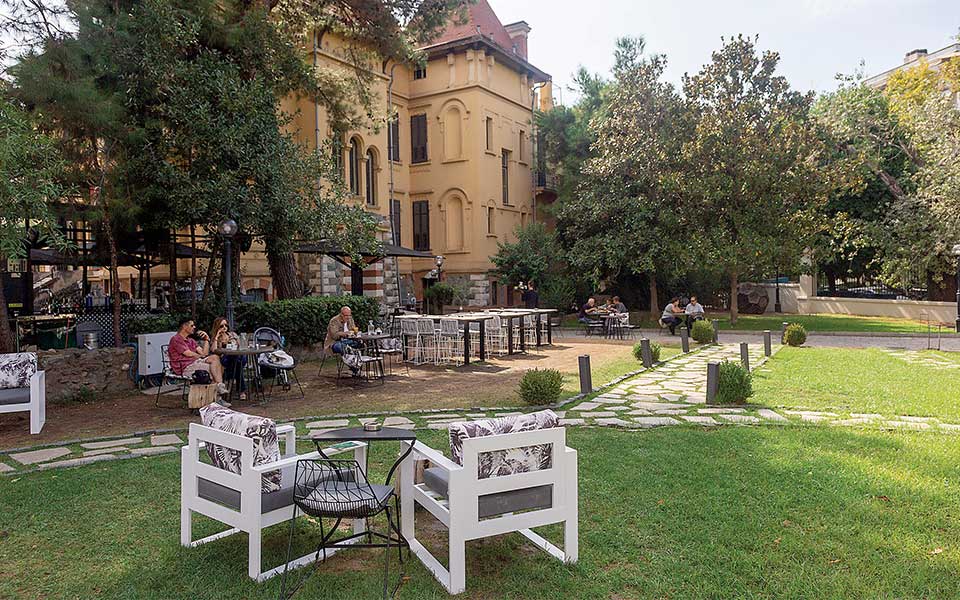
© Perikles Merakos
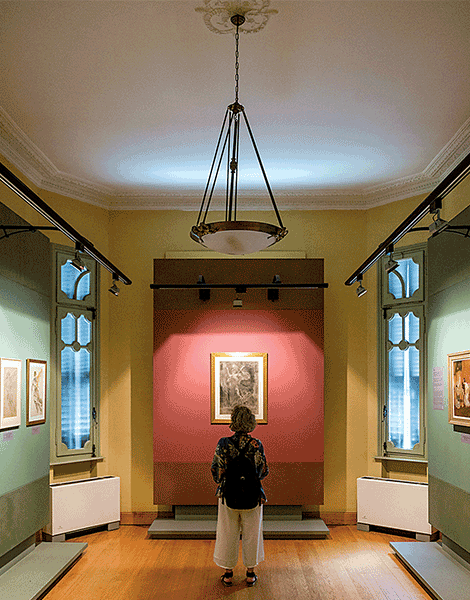
© Perikles Merakos
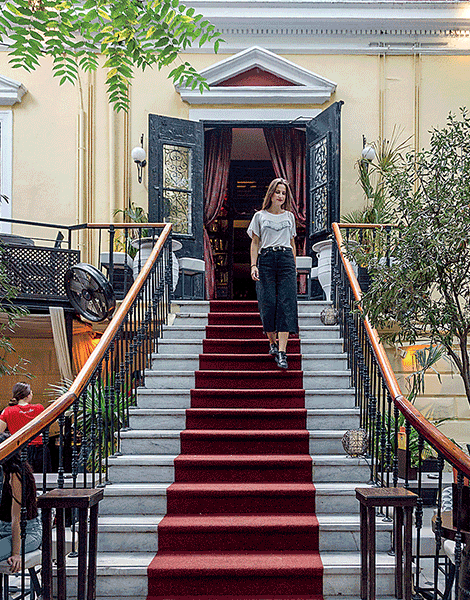
© Perikles Merakos
New Life in Old Buildings
In the late 19th century, the wealthiest Christians, Jews and Muslims of Thessaloniki started to build mansions in the “Exoches,” the area outside the city’s eastern walls. While neoclassicism suited the Athenians, eclecticism better expressed Thessaloniki’s cultural diversity; from medieval battlements to onion domes, Islamic arches and lacy eaves, this fanciful neighborhood had it all.
Some of these mansions, as well as a former mosque, are now venues for culture and recreation. The Municipal Art Gallery of Thessaloniki makes use of three historic buildings that are themselves works of art: the Villa Bianca, the Yeni Tzami, and the Alaca Imaret (near Ano Poli).
Pierro Arrigoni’s Art Nouveau Villa Bianca was commissioned by Dino Fernandez Diaz and named after his wife. Today, exhibitions and events are held in this edifice, once nearly lost to ruin. The villa also houses a fine collection of works of Nikolaos Gyzis.
The exotic Yeni Tzami, or “New Mosque,” marries Renaissance and Islamic details. It was designed by Vitaliano Poselli for the Donmeh community, Jews who converted to Islam, and is now an exhibition and performance space of the Municipal Art Gallery.
The MIET Cultural Foundation of the National Bank of Greece holds inspired exhibitions in the storied Villa Kapandji, designed by Pierro Arrigoni in the late 19th century.
The grand Villa Modiano now houses the Folklife and Ethnographic Museum of Macedonia – Thrace, whose exhibitions include a magnificent display of traditional costumes.
Recently, two places for food, drinks and coffee have also opened: the Epavli Marokkou, in the mansion of the same name, and the Casablanca Social Club, in the Villa Michailidi.
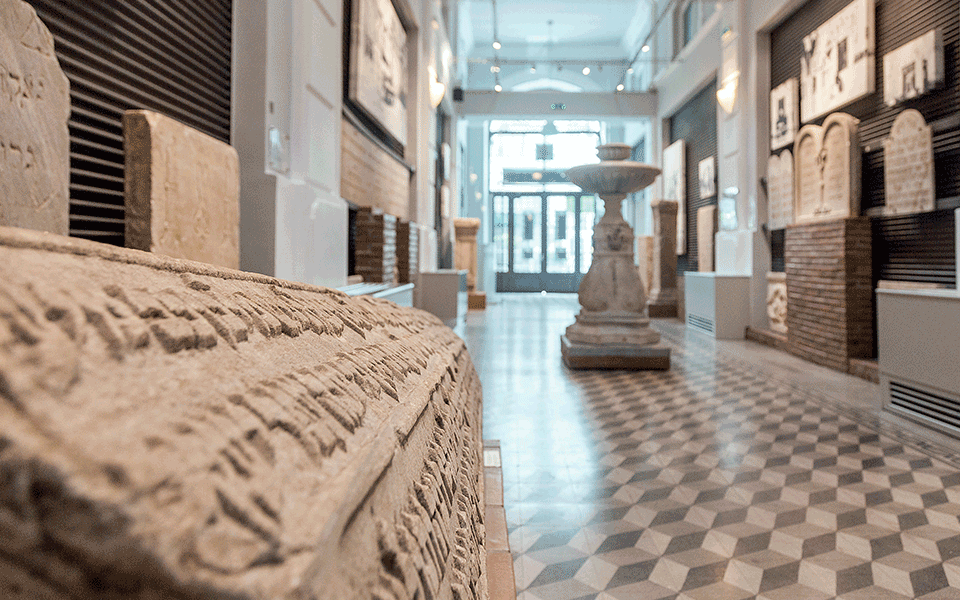
© Perikles Merakos
THESSALONIKI’S Jewish Past
The lilting sound of Ladino, a Judeo-Spanish language, once filled Thessaloniki’s streets. For centuries, a thriving Jewish community was a cornerstone of the city’s multicultural society; in fact, the city was once known as “the Mother of Jerusalem.” Today, the community numbers only about 1,000. Nonetheless, there are several reminders of the vital importance of the historical Jewish presence in Thessaloniki, and it’s certainly worth seeking them out.
On the corner of Komninon and Vassileos Irakleiou Street, the lovely 16th-century Yahudi Hammam – or “Jewish Bathhouse” – is now a picturesque backdrop for a series of louloudadika, or flower stalls.
Just five minutes’ walk from here is the Jewish Museum of Thessaloniki, housed in a beautiful early 20th-century shopping arcade. On the ground floor is an exhibition focusing on the city’s vast Jewish cemetery, destroyed during WWII. Displays on the upper floor share centuries of Jewish life, culture, and personalities, and include an exhibit on the Holocaust, in the new wing of the museum – the walls are inscribed with the names of the victims.
On a shady street in a lovely neighborhood above Egnatia Street, a ten-minute walk from the museum, is the Monastirioton Synagogue – enquire at the museum about visiting. After the fire of 1917, which destroyed much of the Jewish quarter of the city, and following the destruction wrought by the Nazis during the Occupation, this is the only historic synagogue remaining in the city. This beautiful structure, dedicated in 1927 and recently restored, was commissioned by Jews from Monastir (present-day Bitola, North Macedonia), and designed by the Czech architect Eli Ernst Levy.
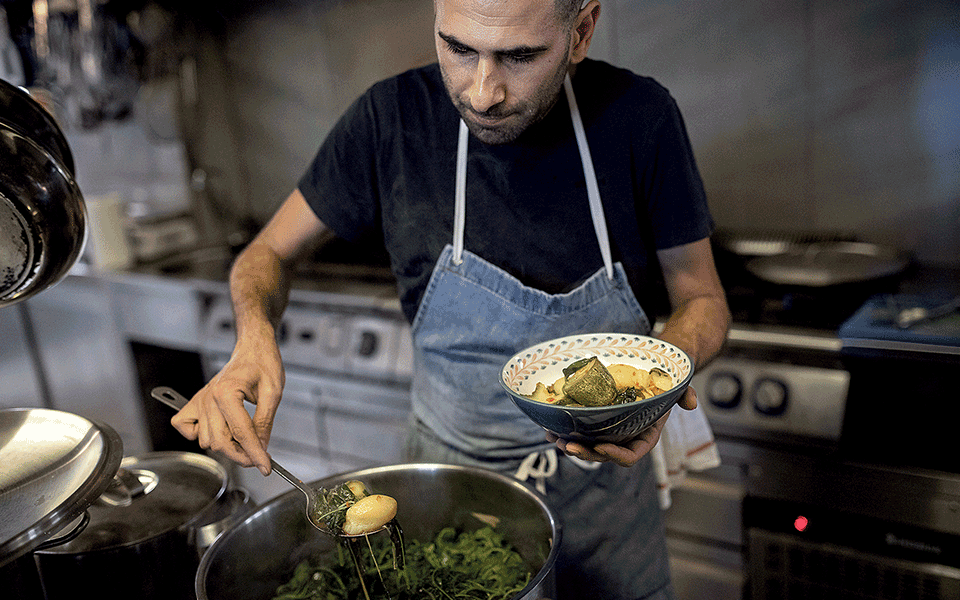
© Konstantinos Tsakalidis
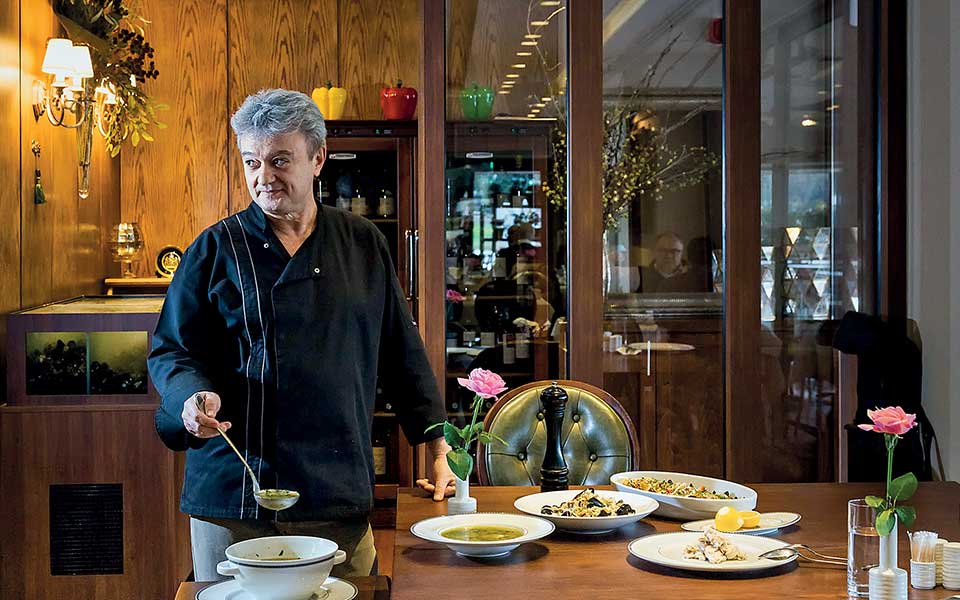
© Perikles Merakos
CULINARY creativity
The city’s cuisine has always been known for its hearty, spice-rich dishes and for its excellent seafood. There are several upscale restaurants with a long history behind them, such as Mavri Thalassa (3 Nikolaou Plastira, Tel. (+30) 2310.932.542), considered the best choice for fish.
At the same time, there’s another gastronomic approach that’s gaining ground. Young restaurateurs, chefs and sommeliers have created a new wave of eateries serving good, inexpensive food. Maitr and Margarita (2 Verias, Tel. (+30) 2314.007.586) is a gastro-bistro, with a menu that reflects the Thracian chef’s culinary roots and offers traditional recipes reimagined in contemporary ways and made with choice ingredients from award-winning producers.
Mourga (12 Christopoulou, Tel. (+30) 2310.268.826) is a gastro-kafeneio serving upgraded cuisine with excellent raw materials – all their products except the fish are organic. Don’t miss out on dishes that showcase the magnificence of simplicity, such as the crayfish with goat’s butter and thyme, or the fresh Greek tuna with pasta.
Nama (1 Olympou, Tel. (+30) 2313.088.241), set up by a group of friends, serves simple Mediterranean cuisine (flavored with plenty of herbs and spices) in an unpretentious environment, and attracts a clientele of mainly thirty-somethings.
Nea Folia (4 Aristomenous, Tel. (+30) 2310.960.383), a no-frills taverna, cooks up tasty stews with local meat and has many dishes inspired by the cuisine of Asia Minor and the Balkans; if you love cheese, you’ll also find plenty of delicious choices from the Cyclades, Crete and mainland Greece.
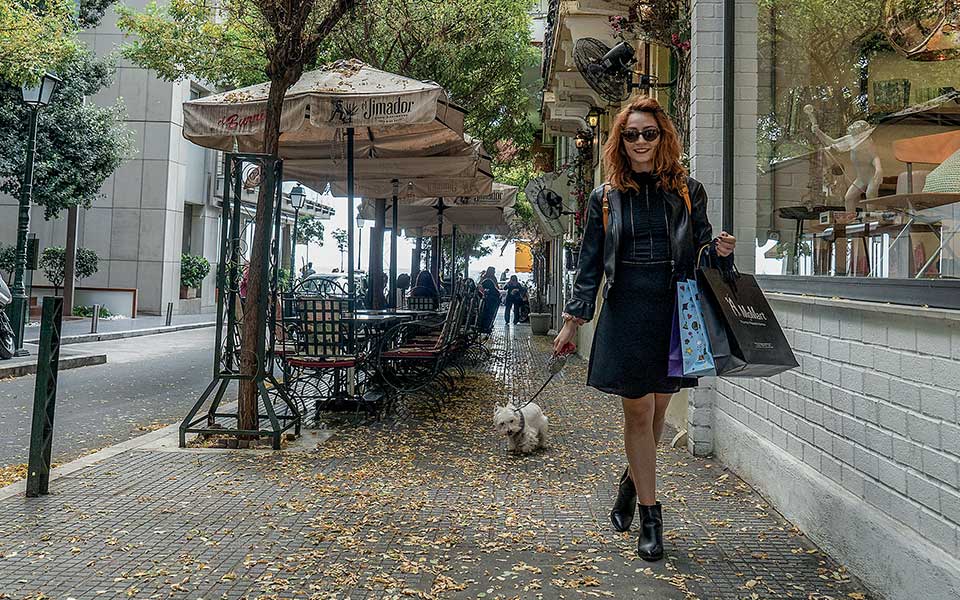
© Perikles Merakos
Browsing the boutiques
Thessaloniki’s women are known for being immaculate dressers, and it’s a stereotype they proudly embrace. They take care of their appearance – you’ll rarely see any of them looking unkempt – and they’re in and out of the shops every chance they get, from morning until just before closing time. If there’s any occasion where they need to make an impression, they’ll always buy something new.
The three main shopping streets appeal to different types of shoppers. On Tsimiski, you’ll find department stores with international brands, multinational chain stores and numerous Greek clothing companies. Among them are hairdressing salons, make-up stores and opticians. This is where school and university students spend their allowances to get their hands on the latest trends.
Running parallel, Mitropoleos has more boutiques and an older clientele, and particularly appeals to women who consult fashion magazines before they go out shopping. The stores here sell clothes by local designers, handmade jewelry and shoes, and outfits for a less conventional look.
One street over towards the sea, Proxenou Koromila is a compact version of London’s Bond Street, with boutiques by major designers of international fame. Artworks and objects of desire, Italian brands and high design all have their home on this road and its vicinity.
Take a break from shopping for a coffee or an aperitif at Mon Frère (6 Karolou Dil), an all-day hangout frequented by the poshest and best-dressed locals. Nearby is the Bientot wine store (5 Morgendaou), which doubles as a wine bar, with a few select choices by the glass – a perfect place for some bubbly or a Greek varietal, in a true jewel of a building.
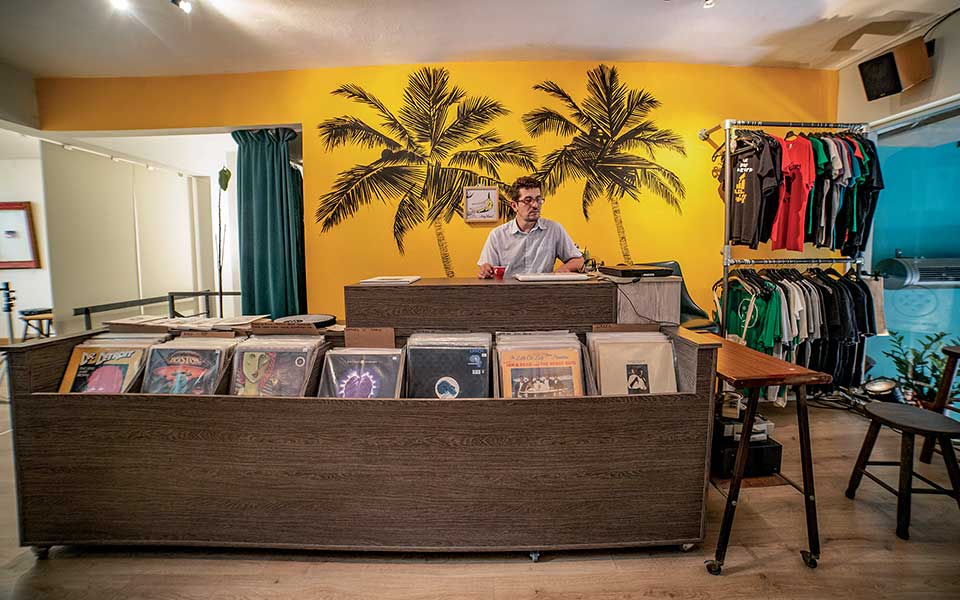
© Nicolas Econmou
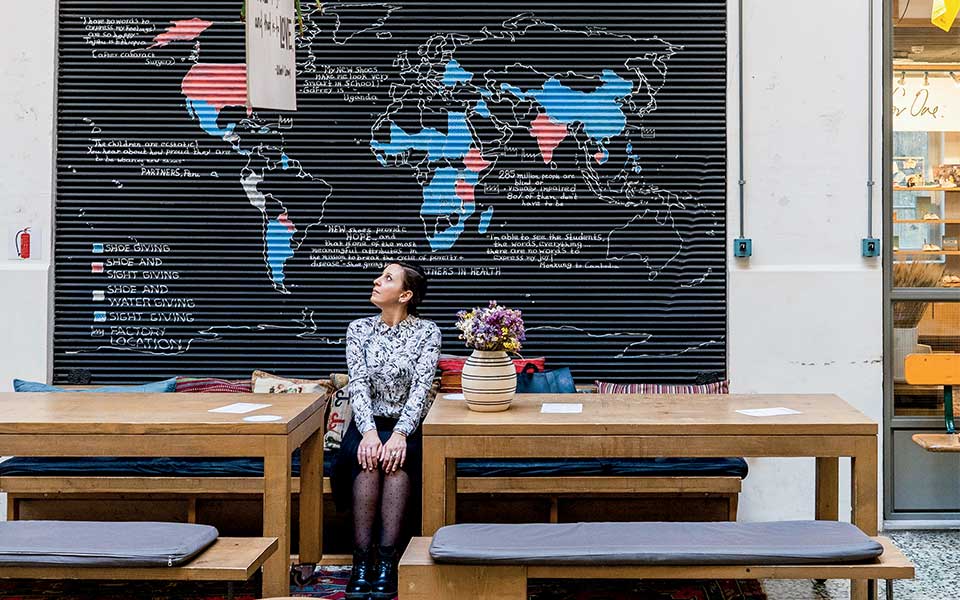
© Perikles Merakos
not just a cup of joe
Coffee is the perfect excuse to visit a number of establishments that offer much more than just drinks and food. TOMS Café (22 Tsimiski) is housed in one of the city’s prettiest arcades, Stoa Pelosof, and is part of an international social enterprise chain. Their motto is “One for One” and the company provides developing countries with 140 liters of drinking water for every coffee packet it uses. It also sells shoes, clothing and eyewear, and every purchase benefits a vulnerable community somewhere in the world.
The popular Ypsilon (5 Edessis), housed in an old traveler’s inn, is a café-bar that also operates as a workspace and cultural venue. This is where the city’s artiest types gather for evening drinks.
The all-day café La Nina Frida (4 Achiropiitou) is an SCE (Social Cooperative Enterprise) where, in addition to wonderful homemade food, you’ll also find products by other SCEs. They also organize occasional excursions and short day trips. Some staff members are trained in sign language, and the shop’s menu is available in Braille.
Ergon Agora (48 Pavlou Mela) is a paradise for foodies; it’s a fully-stocked delicatessen as well as an all-day eatery. Specialty coffees are served in cups made by ceramicists exclusively for Ergon, while menu items are prepared with Greek products that are available for purchase from the store.
The multi-purpose venue To Pikap (57 Olympou) is run by five friends; it’s a self-service café-bar which houses a small record label (Pikap Records), a store selling books and vinyl records, and a gallery space. They also run a web radio station, topikapradio.gr. Via their website, they‘ve created a community of 160 local artists, and they’ve launched a publishing company, although with only one title published so far. You’re sure to discover even more going on when you visit.

